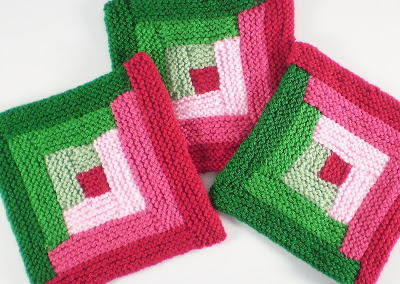 |
| Gypsy Wife Quilts |
 |
| Take a Bow Mystery Club Quilts |
I was very taken with these little rainbow quilts as I only make small quilts (although mine are bigger than these).
Aren't they beautiful? I think the two packs go together well; I'm planning to use them to make some quilts from my new book by Kathleen Tracy that I bought at the Festival of Quilts. First though, I've got to finish quilting this one ...
I was also pleased to see this quilt kit, inspired by Lucy Boston's Keyboard Quilt. Lucy Boston is the author of the wonderful Green Knowe books; you can read more about her in my post from last year here.
This next quilt is called Interlocking Triads. Bramble Patch will be running workshops on this one in the coming months. I love the colours and shapes in this one - very much my sort of thing.
After seeing the exhibition I had a wander round the shop. I had a £20 fabric voucher to spend, courtesy of my loyalty card so was looking for something special.
I'm always very taken by the Batik section - aren't all those rich colours gorgeous?
And there were several more Lucy Boston kits to admire. This Kaleidoscope Cushion Kit uses Liberty prints from the new Liberty patchwork cotton collection.
But I was drawn, as I often am, to the Moda charm packs where you get 42 5" squares from a fabric collection. I love using reproduction fabrics so these are the two packs I chose.
The one on the left is 'New Hope' by Jo Morton, author of one of my favourite quilt books Jo's Little Favorites. There are two more volumes of this book but I've so far resisted the temptation to buy them too. Anyway ... the second charm pack is called 'Evelyn's Homestead 1880 - 1900' by Betsey Chutchian. Would you like to see all the fabrics? Of course you would.
 |
| Jo Morton |
 |
| Betsey Chutchian |
Aren't they beautiful? I think the two packs go together well; I'm planning to use them to make some quilts from my new book by Kathleen Tracy that I bought at the Festival of Quilts. First though, I've got to finish quilting this one ...
This is my little Snowball quilt that I hand pieced ages ago and then put away when the quilting wasn't going well. I always hand quilt but, this time, my quilting left a lot to be desired - lumps and bumps all over the place. When this happens the answer is always more quilting; in this case I added the little quilted squares in the middle of the blocks and now it's starting to look quite nice. As you can see, I've just got to finish quilting the border and bind it and it will be done. Then I can start a new quilt ...






































